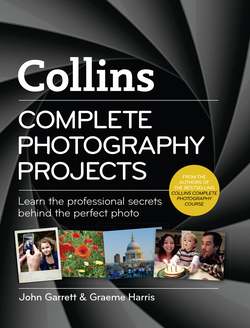Читать книгу Collins Complete Photography Projects - John Garrett - Страница 29
UNDERSTANDING APERTURE
ОглавлениеThe aperture is one half of the exposure partnership. Together with the shutter, it controls how much light is exposed onto the sensor to form the image.
If you are new to using aperture and shutter speed controls, it’s a good idea to start with aperture priority (A or Av) mode. This will let you choose different apertures and you can watch the camera automatically select the shutter speed to produce a normal exposure. Find a subject with an object close to you in the foreground, one further away and another in the background. First shoot a picture of it with your widest aperture – f4.5, for instance – then stop down the aperture progressively to f16 for your next pictures. This will give you an illustration of how the aperture controls the depth of field – the amount of the subject that is in focus. Aperture is not only an exposure tool; the aperture we choose greatly affects our creative interpretation of the subject.
WIDE APERTURE
Here you can see a lens at its widest aperture – in this case f2.8.
NARROW APERTURE
Stopped down to f16, the aperture through which light passes is now greatly reduced.
SHALLOW DEPTH OF FIELD
To demonstrate the shallow depth of field that a standard lens will give when set at f2.8, I focused on the zebra. The animals in the foreground and background are out of focus, which has the effect of keeping our attention on the zebra.
WIDE DEPTH OF FIELD
This is exactly the same subject, photographed from the same distance, but stopping the aperture down to f16 has made everything sharp, from the cheetah in the foreground to the background tree. Every element in the picture is now vying for attention.
